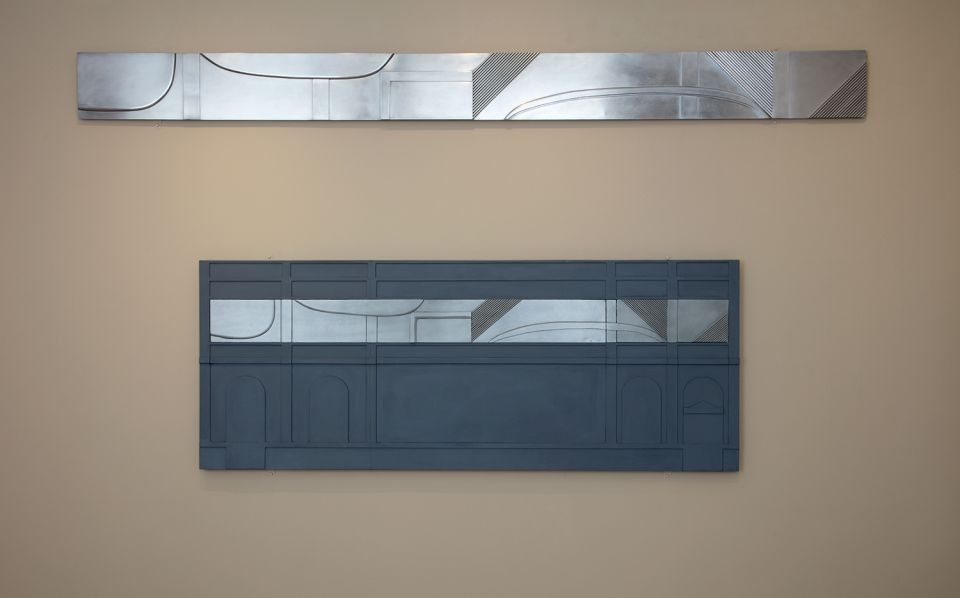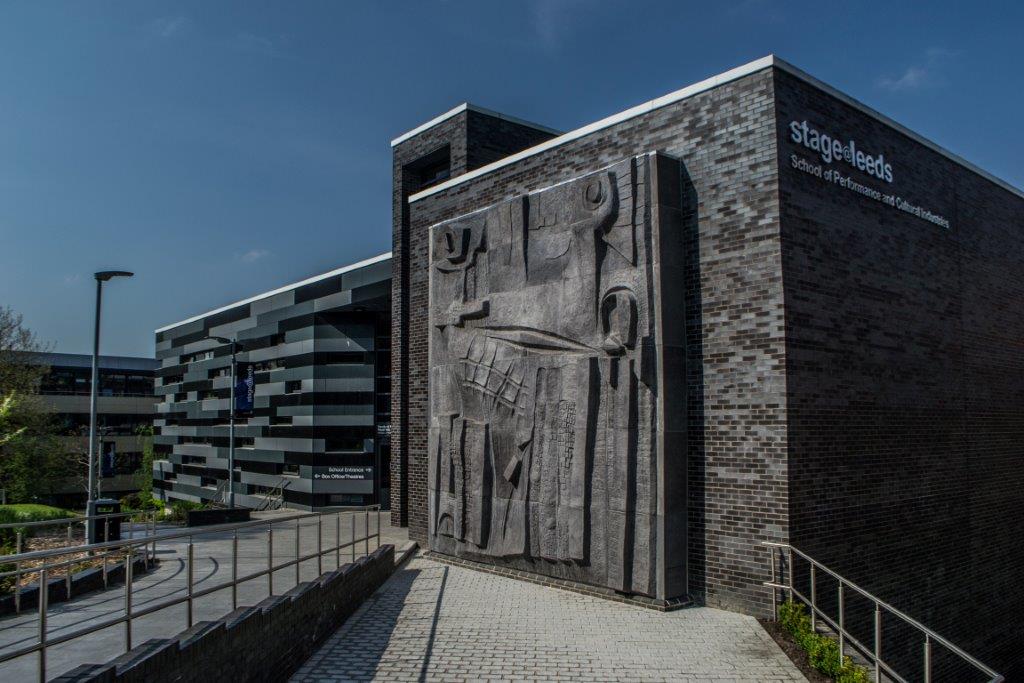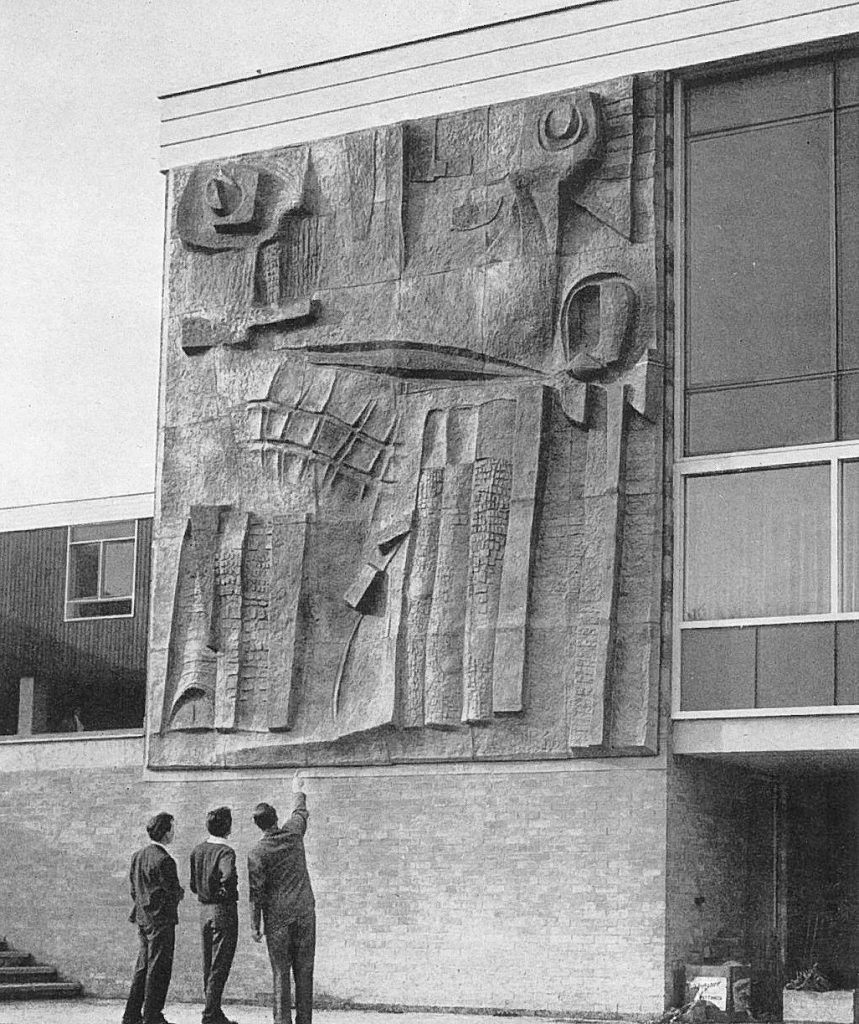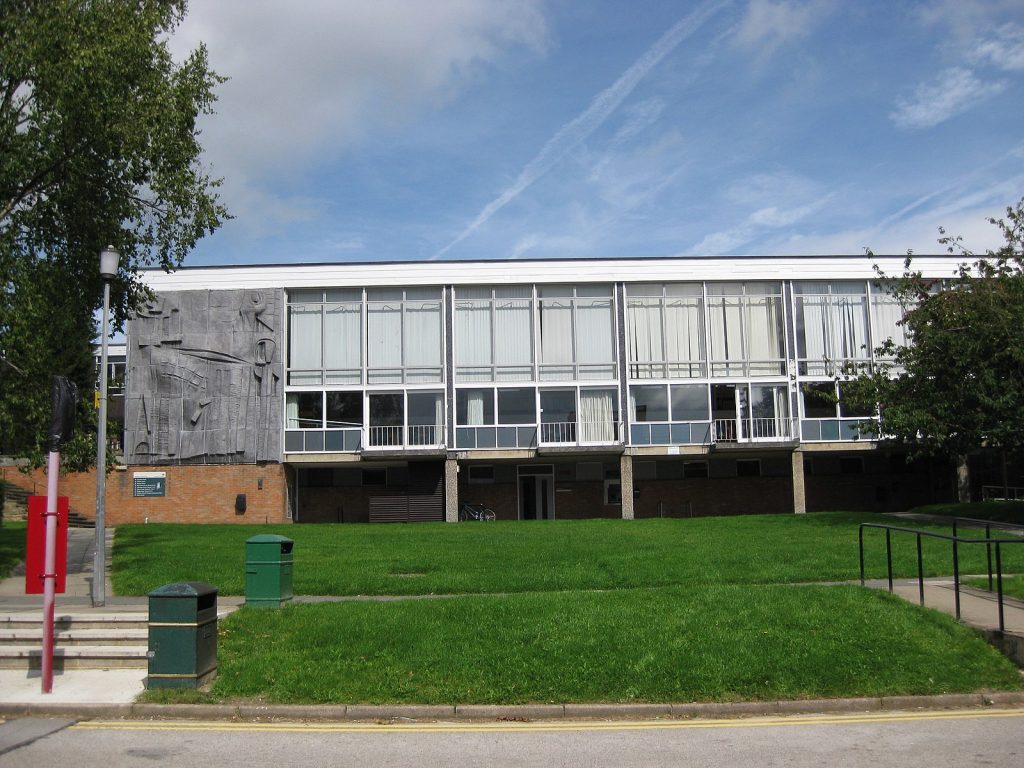
Exhibition 13 June – 2 September 2018
Henry Moore Institute and Leeds Art Gallery
Top: Hubert Dalwood Relief model of the facade of Leeds Art Gallery, Leeds Museums and Galleries, 1967, aluminium. Bottom: Relief model of the facade of Leeds Art Gallery, 1967, painted wood. Photos: Jerry Hardman-Jones
Between 1928 and 1932 The Headrow – the road directly outside the Henry Moore Institute and Leeds Art Gallery – was widened. The buildings that were demolished suddenly revealed the previously hidden façade of Leeds Art Gallery. Never intended to be seen so prominently, the austere façade designed by W.H. Thorp in 1886 was considered too plain and intimidating, the sandstone having darkened from pale gold to almost black with pollution.
A larger gallery, museum and library complex was suggested in 1937, but stalled due to the outbreak of the Second World War. The issue wouldn’t be addressed again until the 1960s.
Artists Neville Boden (1929-96), Hubert Dalwood (1924-76) and Austin Wright (1922-2003) were selected to propose a frieze to be installed across the 40-metre façade. All three had been Gregory Fellows at the University of Leeds, making them familiar with both the cultural context of the city and architecture of the gallery.
Boden’s contribution was titled ‘The Bach’ and was intended to reference the association between music and the city – especially the periodical festivals staged at Leeds Town Hall next to the gallery. Boden recognised that music was a useful analogy for abstract sculpture and ‘has to do with colours and shapes and spaces and the rhythms produced by repeating and varying them’.
Dalwood collaborated with the architect and town-planner Tom Hancock, an enthusiast of Victorian buildings. As the façade was not solid stone Dalwood thought it would be difficult to achieve a unified design so he proposed a continuous horizontal relief in reflective aluminium.
Wright planned his design around the five sections created by the pilasters, and the forms he conceived were drawn both from architecture and nature; he spoke of spending the entire summer studying a sunflower.
The project was displayed under the title Three Ideas for Sculpture in 1968, but sadly was never realised because the future of the building was brought into question. The proposals – displayed here together again for the first time in fifty years – provide an intriguing set of imagined possibilities.
Robert Rowe, then Director of Leeds Art Gallery, noted that the display had ‘caused a very great deal of interest in Leeds’ and the Arts Council agreed that the models should remain in Leeds. Rowe wrote to Austin Wright in December 1968: ‘Whatever the future may hold I am sure we have not heard the last of this little episode’. Text: Henry Moore Foundation.

From: Arts & Culture news, Leeds University, 13 May 2016:
Listed sculpture is restored and returned
Untitled Bas-Relief, is a 6.4m by 6m sculpture in aluminium by Hubert Dalwood, one of Britain’s leading post-war sculptors.
It was commissioned in 1961 and adorned the building of the University’s Bodington Hall of residence – affectionately known by generations of students as the Bod – for more than 50 years.
The sculpture was greeted with great critical acclaim from The Guardian, The Timesand the Yorkshire Post following its unveiling. It features abstract shapes that flow across a grid of 36 rectangular sections, was Grade II listed by Historic England in 2012.
When Bodington Hall, in north Leeds, was demolished in 2013, the sculpture was carefully taken down, conserved and stored, awaiting a suitable new home on campus.
It has now been installed on the stage@leeds building, the University’s contemporary performance space, and its return will be celebrated at an event on Wednesday [18 MAY].
University Librarian Dr Stella Butler, who oversaw the University’s Public Art Strategy, said: “It’s great to see the Dalwood back in a prominent position on a University building and we are pleased to have been able to find a new home close to the heart of campus where it can be appreciated by students, staff and visitors.”
Hubert ‘Nibs’ Dalwood was awarded a prestigious Gregory artist-in-residence Fellowship at the University of Leeds in 1955 and remained until 1959. It was during this period he first began to work in aluminium. The work at Bodington Hall was his first large scale relief for a University building.
One of Dalwood’s daughters, Kathy Dalwood, herself an artist and a graduate of Leeds College of Art, will attend the celebration event on campus next week.
She said: “Growing up in Leeds myself it was wonderful to be able to see the relief whenever I wanted and I was very proud to tell people it had been made by my father. I’m absolutely delighted that his sculpture has been saved, restored and re-installed at the centre of the University for subsequent generations to enjoy and I hope art students and lovers of art will continue to be inspired by it.
“The sculptures my father made during his years in Leeds – thanks to the Gregory Fellowship – were really what launched his career so it was a very important period for him. Receiving the Bodington Hall commission gave him a sought-after opportunity to translate his current ideas to a monumental scale.
“I remember visiting the foundry in Leeds with him and his excitement at seeing his original panels – in clay, wood and plaster – transformed into aluminium. Leeds was an epicentre of contemporary European art at the time, he found it a very stimulating and exciting environment in which to work and was delighted to have such an important sculpture commissioned in the city.”
Eminent art historian Quentin Bell, who was the University’s first Professor of Fine Art from 1959 to 1967, described it as “the largest and I think in every way the most important of Hubert Dalwood’s sculptures”, adding “The University may well be proud to possess such a work, and proud that it is the work of a Gregory Fellow.”
The work will be included in a new version of the University’s Public Art Trail, which guides visitors around its many important artworks. Free copies of the trail will be available next week from The Stanley & Audrey Burton Gallery, and it is downloadable here now. An interactive version of the trail can be accessed by clicking the Art On Campus tab on the campus map.

